
Hello Again Everyone!!
Hwaeomsa Temple, which is located in Gurye, Jeollanam-do, is on the very south-western edge of the famed Jirisan National Park. Hwaeomsa Temple means “Flower Garland Temple,” in English. Because of this name, it is directly linked to Gwanseeum-bosal (The Bodhisattva of Compassion). In Korean, the Flower Garland Sutra is known as “Hwaeom Gyeong – 화엄경.” And in Sanskrit, the sutra is known as the “Avataṃsaka Sūtra.”
The temple was first founded in 544 A.D. by the monk Yeongi-josa, who might have come from India. The temple was then later expanded by Jajang-yulsa (590-648 A.D.) in 643 A.D. And during the reign of King Munmu of Silla (r.661-681 A.D.), the famous monk, Uisang-daesa (625-702 A.D.) inscribed eighty replicas of the Flower Garland Sutra on stone tablets at Hwaeomsa Temple. Later, in 875 A.D., another famous monk, Doseon-guksa (827-898 A.D.) expanded the temple, once more.
Throughout the years, Hwaeomsa Temple has undergone numerous renovations. And in 1593, most of the temple shrine halls at Hwaeomsa Temple were completely destroyed by fire by the invading Japanese during the Imjin War (1592-98). Remarkably, the temple was able to preserve pieces of Uisang-daesa’s stone tablets inscribed with the Flower Garland Sutra on them. They’re known as Seokgyeong, or “Stone Sutra,” in English. Even though they were shattered by the Japanese, some 9,000 fragments still remain. These fragmentary artifacts, that were originally written on light blue stone, changed into a gray-brown colour caused by the fires that engulfed the temple. Presently, these fragments are Korean Treasure #1040.
After the war, and between 1630-1636, Hwaeomsa Temple, and some of the buildings that now take up residence on the temple grounds, were rebuilt. And in 1701, during the long reign of King Sukjong of Joseon (r.1674-1720), the reconstruction of Hwaeomsa Temple was completed. The temple shrine hall buildings that were completed at this time were the Daeung-jeon Hall, the famed Gakhwang-jeon Hall, the Myeongbu-jeon Hall, the Wontong-jeon Hall, and the Yeongsan-jeon Hall. Also, three gates, the Geumgangmun Gate, the Cheonwangmun Gate, and the Boje-ru Pavilion were built at this time, as well.
Hwaeomsa Temple is home to an astonishing four National Treasures, eight Korean Treasures, one Historic Site, one Scenic Site, and two Natural Monuments. Hwaeomsa Temple is also a host to the very popular Temple Stay program.
You first approach Hwaeomsa Temple up a long valley, which neighbours the stunning Masan River. When you finally do arrive at the temple grounds, you’ll first be welcomed by the two-pillared Iljumun Gate. Stepping through this stately One Pillar Gate, you’ll next be greeted by the Geumgangmun Gate (The Diamond Gate) and the Sacheonwangmun Gate (The Four Heavenly Kings Gate). Both are wonderful examples of the splendour of these Korean entry gates.
After skirting the Boje-ru Pavilion to your right, you’ll finally enter the main temple courtyard. To the far left stands the temple’s bell pavilion, the “Jong-gak,” in Korean. The bell pavilion is protected by four fierce lions that stand on each of the four corners of the pavilion. To the left, the Jong-gak is joined by the Yeongsan-jeon Hall that houses eight stunning murals, the Palsang-do, which are dedicated to the Buddha, Seokgamoni-bul’s, life. In this courtyard, but before mounting the stairs that lead up to the historic Daeung-jeon Hall, are a pair of ancient pagodas: Seo-ocheung Pagoda (West Five-Story Stone Pagoda) and the Dong-ocheung (West Five-Story Stone Pagoda). Both are believed to date back to the 9th century. The East Five-Story Stone Pagoda is Korean Treasure #132, while the West Five-Story Stone Pagoda is Korean Treasure #133. Both are wonderful examples of Silla-designed pagodas with beautiful lines and decorative guardians.
Finally climbing the stairs to the upper temple courtyard, you’ll come face-to-face with the Daeung-jeon Hall. The main hall is Korean Treasure #299. The weathered Daeung-jeon Hall is believed to date back to 1630 when it was built by the monk Byeogam. The Daeung-jeon Hall houses a large triad of statues on the main altar centred by Birojana-bul (The Buddha of Cosmic Energy). This statue is joined on either side by Seokgamoni-bul (The Historical Buddha) and Rocana-bul (The Perfect Body Buddha). According to temple records from 1697, the wooden statues were jointly carved in 1636 by several famous sculptor monks that were active in the region during the early to mid part of the 17th century. They are Korean Treasure #1548. These three statues are meant to form the different incarnations of the Buddha. And they are backed by a beautiful mural of the triad that’s Korean Treasure #1363. The interior of the hall, including the canopy that hangs above the triad of statues on the main altar, is highly elaborate and colourful in design and artistry.
To the right of the Daeung-jeon Hall is the Myeongbu-jeon Hall, which houses a green-haired statue of Jijang-bosal (The Bodhisattva of the Afterlife). Jijang-bosal is joined by ten seated statues of the Shiwang, or the “Ten Kings of the Underworld,” in English. To the left of the Daeung-jeon Hall, and between the massive Gakhwang-jeon Hall, are the Wontong-jeon Hall and the Nahan-jeon Hall. The Wontong-jeon Hall houses a statue of Gwanseeum-bosal, while the Nahan-jeon Hall houses both paintings and statues dedicated to the Nahan (The Historical Disciples of the Buddha). And the final shrine hall of the triad of temple buildings in this part of the temple is the Samseong-gak Hall. Housed inside this shaman shrine hall is a collection of shaman murals dedicated to Chilseong (The Seven Stars), Dokseong (The Lonely Saint), and Sanshin (The Mountain Spirit).
But it’s out in front of the Wontong-jeon Hall, and the Lion Pagoda at the Wontong-jeon Hall, that’s the most intriguing. The Lion Pagoda is Korean Treasure #300, and it’s believed to have been built sometime during the 9th century. This pagoda is typically called a “Noju,” in Korean, or a “Stone Pillar,” in English. The exact meaning and purpose aren’t precisely known, but it’s presumed to have been used either as a reliquary for sari (crystallized remains) or for holding memorial services around it. As for its design, it has four lions at each direction similar to the one up the hill at Hwaeomsa Temple, as well as the brick pagoda at Bunhwangsa Temple in Gyeongju. On the heads of the four lions rests a square stone chamber where it’s presumed that the sari were housed. And each of the lions sits upon a lotus pedestal. It’s a rather remarkable example of Buddhist artistic achievement using stone.
To the left of this collection of shrine halls and the Lion Pagoda is the Gakhwang-jeon Hall. This hall is National Treasure #67. This massive hall was rebuilt to replace the hall that was destroyed by the Japanese during the Imjin War. It was completely rebuilt in 1702, and the name of the shrine hall, Gakhwang-jeon Hall, means “Enlightened Emperor Hall,” in English. The stone base that supports the two-story structure is presumed to date back to Later Silla (676-935 A.D.). Inside this hall are three massive Buddha statues and four accompanying Bodhisattvas.
Out in front of the Gakhwang-jeon Hall is the equally massive 6.4 metre tall stone lantern, or “Seokdeung,” in Korean. The stone lantern is believed to date back to Later Silla (676-935 A.D.) to between 860-873 A.D. The lantern is National Treasure #12. Up until 1960, it was the largest of its kind. The Seokdeung isn’t meant to be lit. Instead, the lantern is meant to symbolize the spiritual light of the Buddha.
The other major highlight to Hwaeomsa Temple, among a whole host of them, and to the left of the Gakhwang-jeon Hall, is up a uneven set of 108 stairs on the hillside. The Sa-saja Samcheung, or “The Four Lion Three-Story Stone Pagoda,” in English, is one of the most original pagodas in Korea alongside Dabo-tap Pagoda at Bulguksa Temple. The pagoda is National Treasure #35, and it’s packed with symbolic meaning. The three-story pagoda rests on top of the first story of the main body. Featured on this first story are doors in the four directions with the Four Heavenly Kings protecting two of these doors in pairs. At the base of the pagoda are four lions which are meant to represent the four human emotions of anger, joy, sorrow, and love. At the centre of the five metre tall pagoda is a stone monk. And out in front of the pagoda, kneeling out of respect, sits another stone figure underneath an equally unique lantern on pillars. It’s believed that the monk that stands with hands clasped together inside the base of the Four Lion Three-Story Stone Pagoda is the mother of the founding monk, Yeongi, while the statue of the monk underneath the stone lantern in front of the pagoda is meant to represent Yeongi himself. Take your time at this pagoda because there are only a handful of pagodas like this that hold such artistic mastery and originality.
Admission to the temple is 4,000 won for adults.
HOW TO GET THERE: From the Gurye Intercity Bus Terminal, you’ll need to take a bus bound for Hwaeomsa Temple. This bus leaves every ten to twenty minutes, and the first bus departs at 8 a.m. The final bus leaves Hwaeomsa Temple at 8:10 p.m. From where the bus lets you off, it’s an additional fifteen to twenty minute walk to get to Hwaeomsa Temple.
OVERALL RATING: 10/10. With a combined sixteen National Treasures, Treasures, Scenic Site, Historic Site, and Natural Monuments, it’s no wonder that Hwaeomsa Temple rates a perfect ten out of ten. There’s just so much to love and explore about Hwaeomsa Temple like the massive Gakhwang-jeon Hall, the equally massive stone lantern that’s situated just outside the Gakhwang-jeon Hall, the Four Lion Three-Story Stone Pagoda, and the countless amount of Buddhist artistry. I highly, highly recommend a trip to Hwaeomsa Temple both for its cultural importance, as well as its artistic beauty. It’s an absolute must!
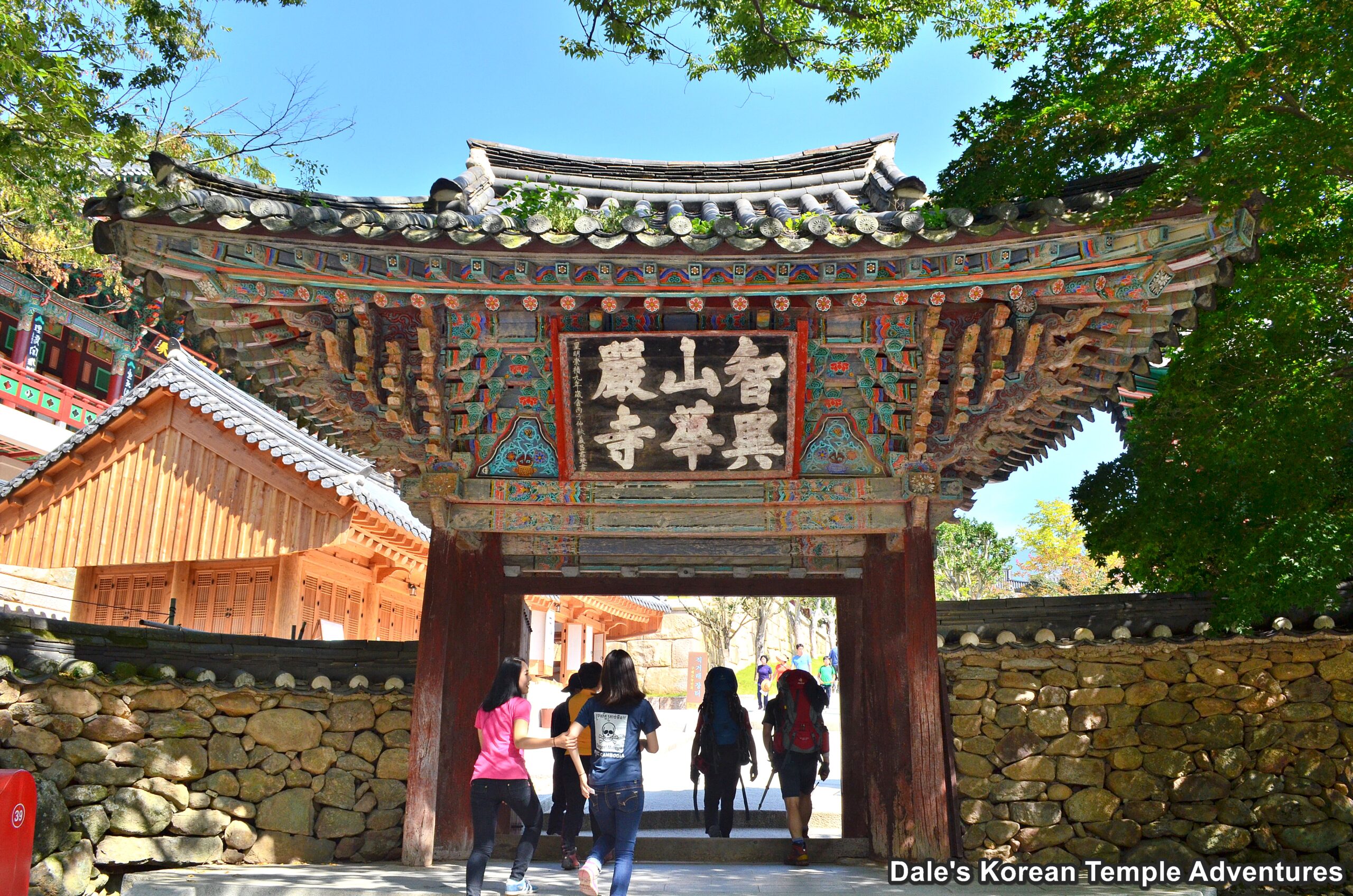

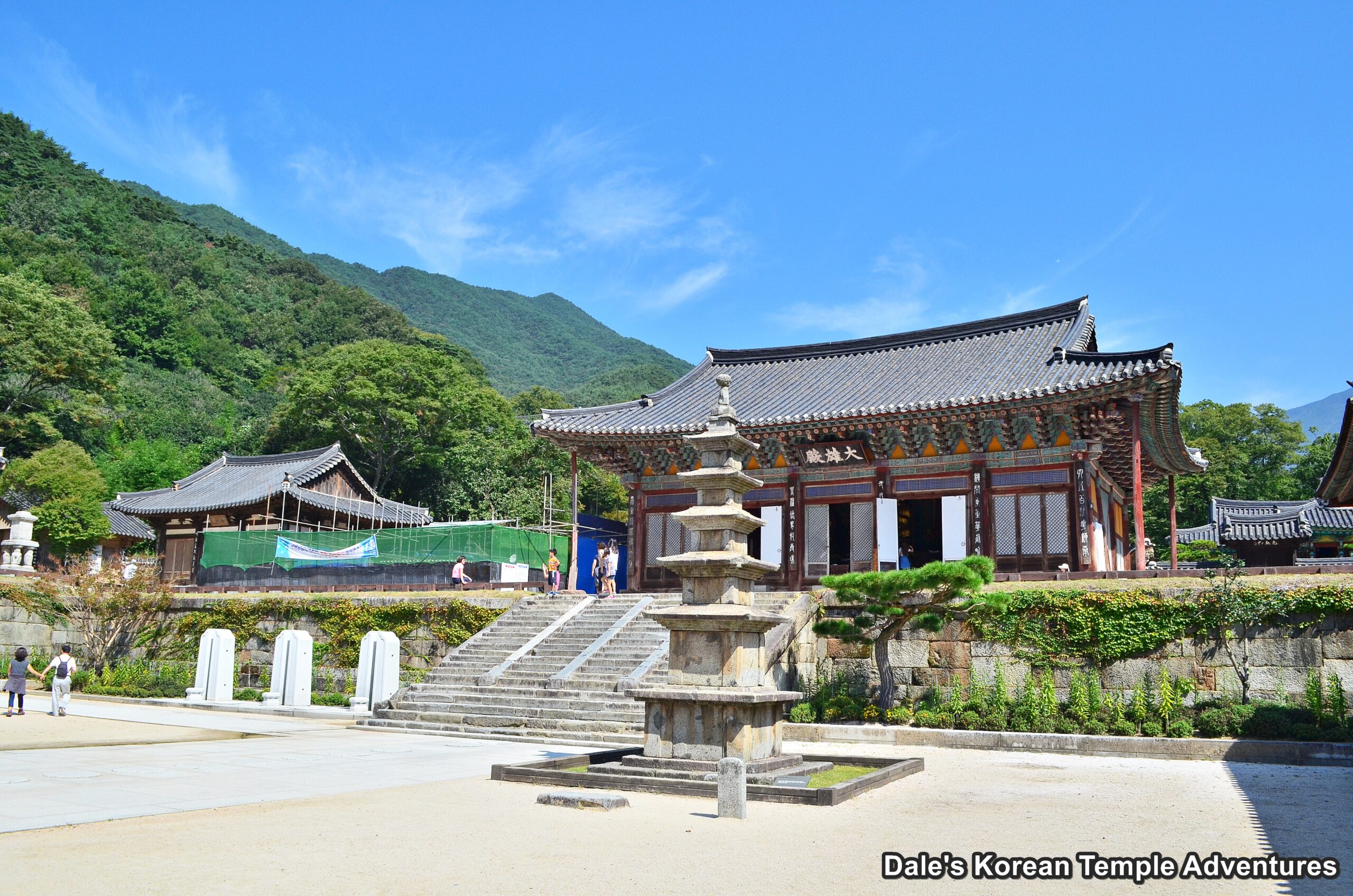
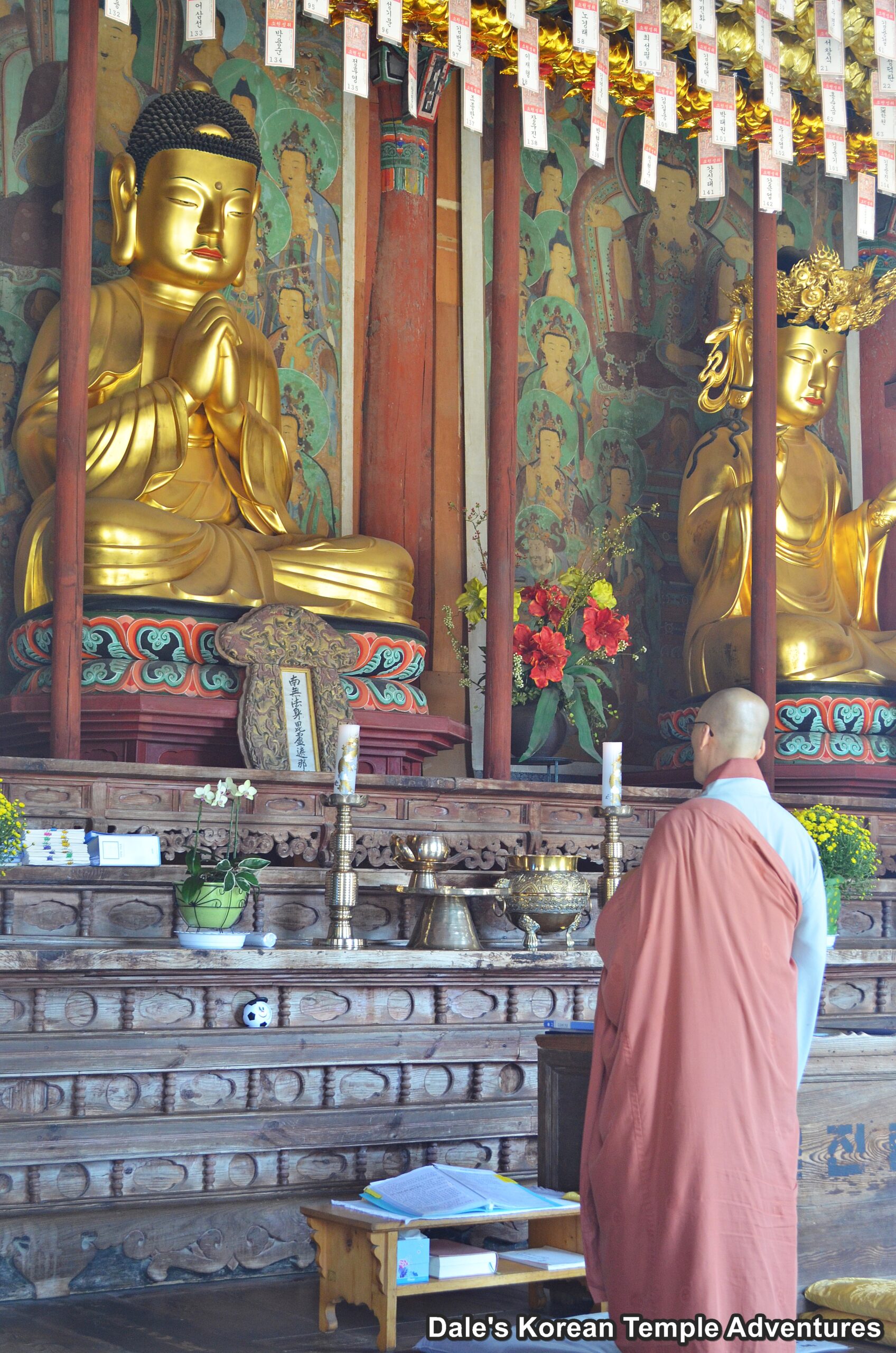
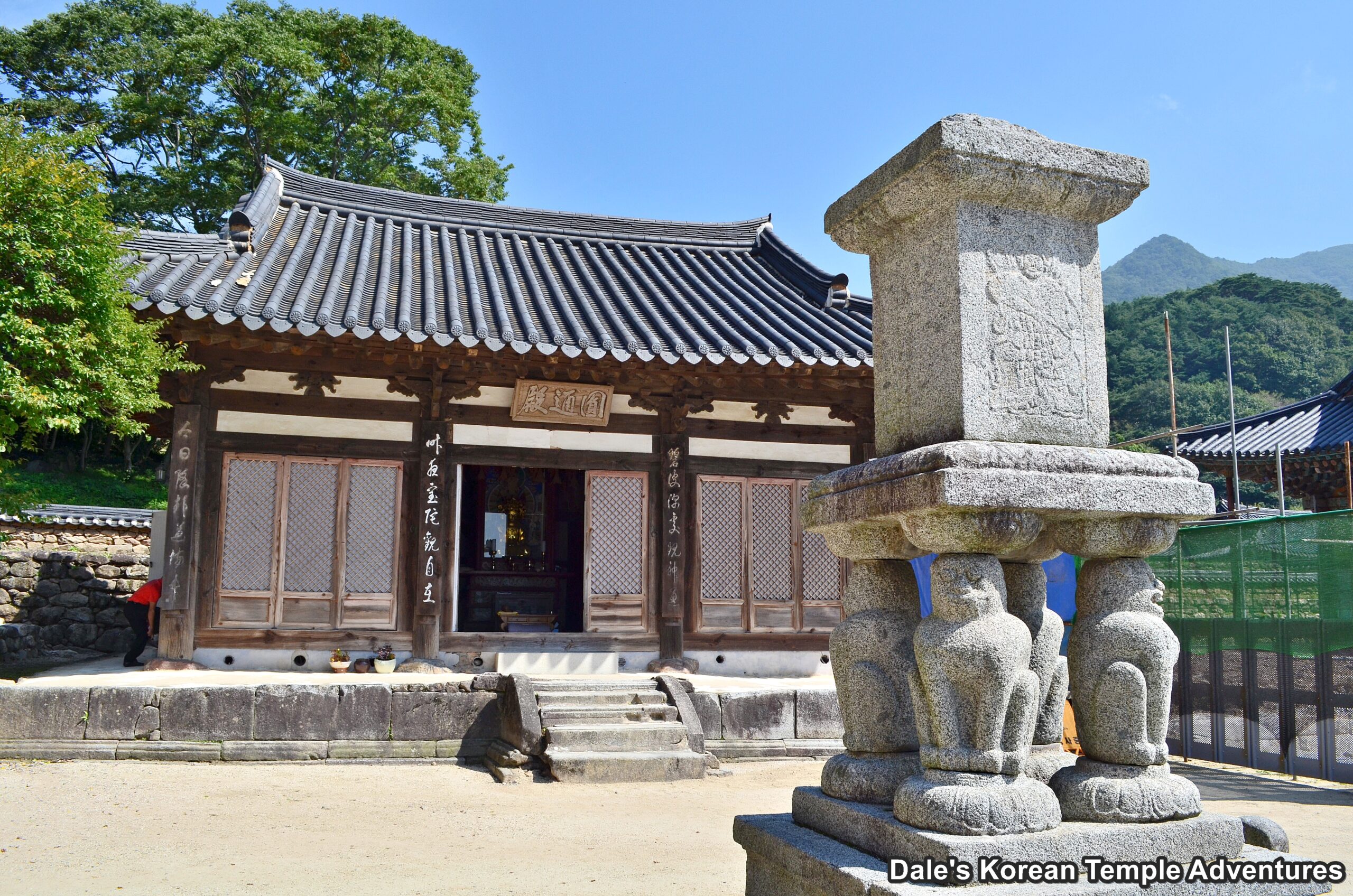
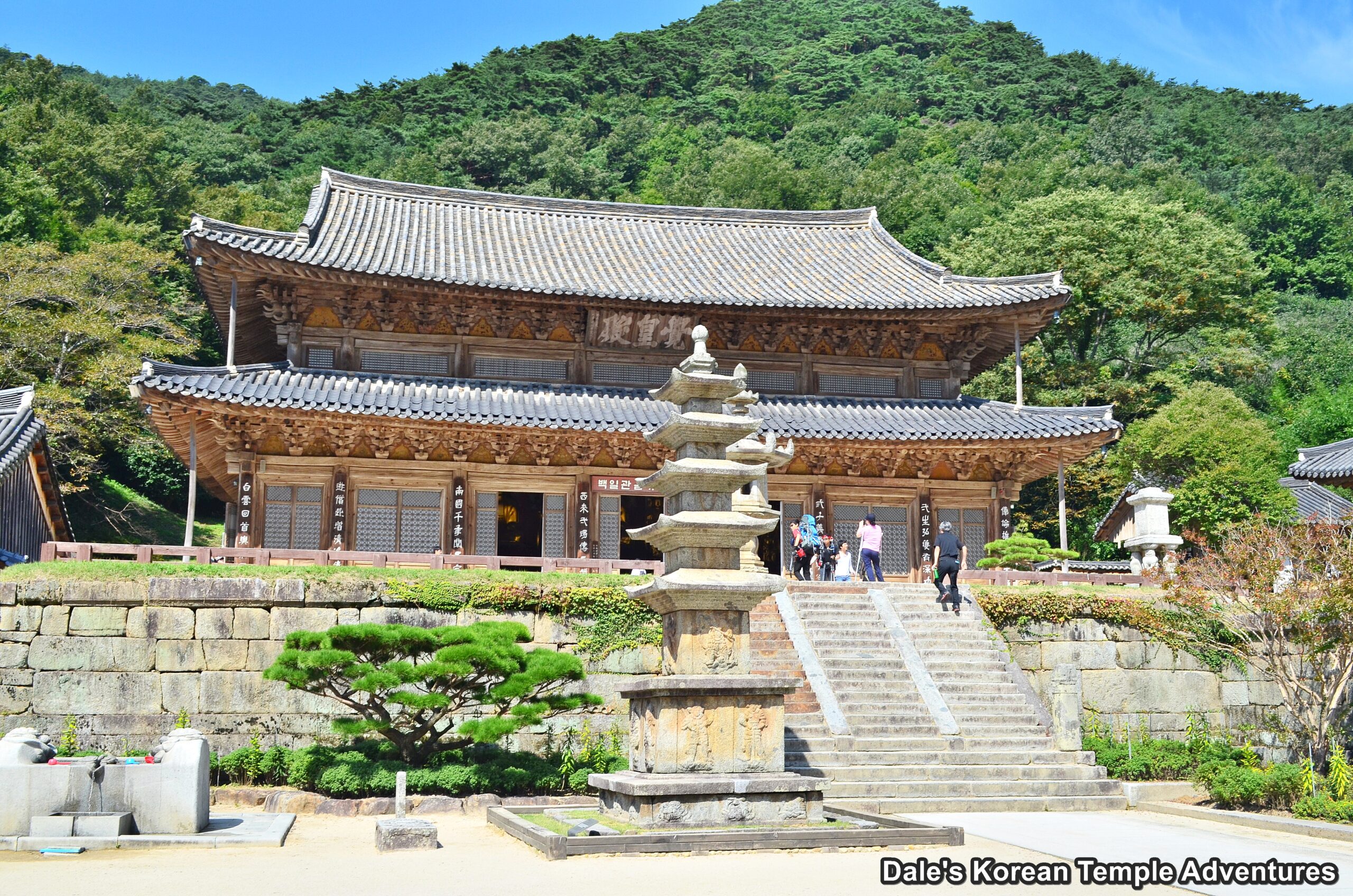
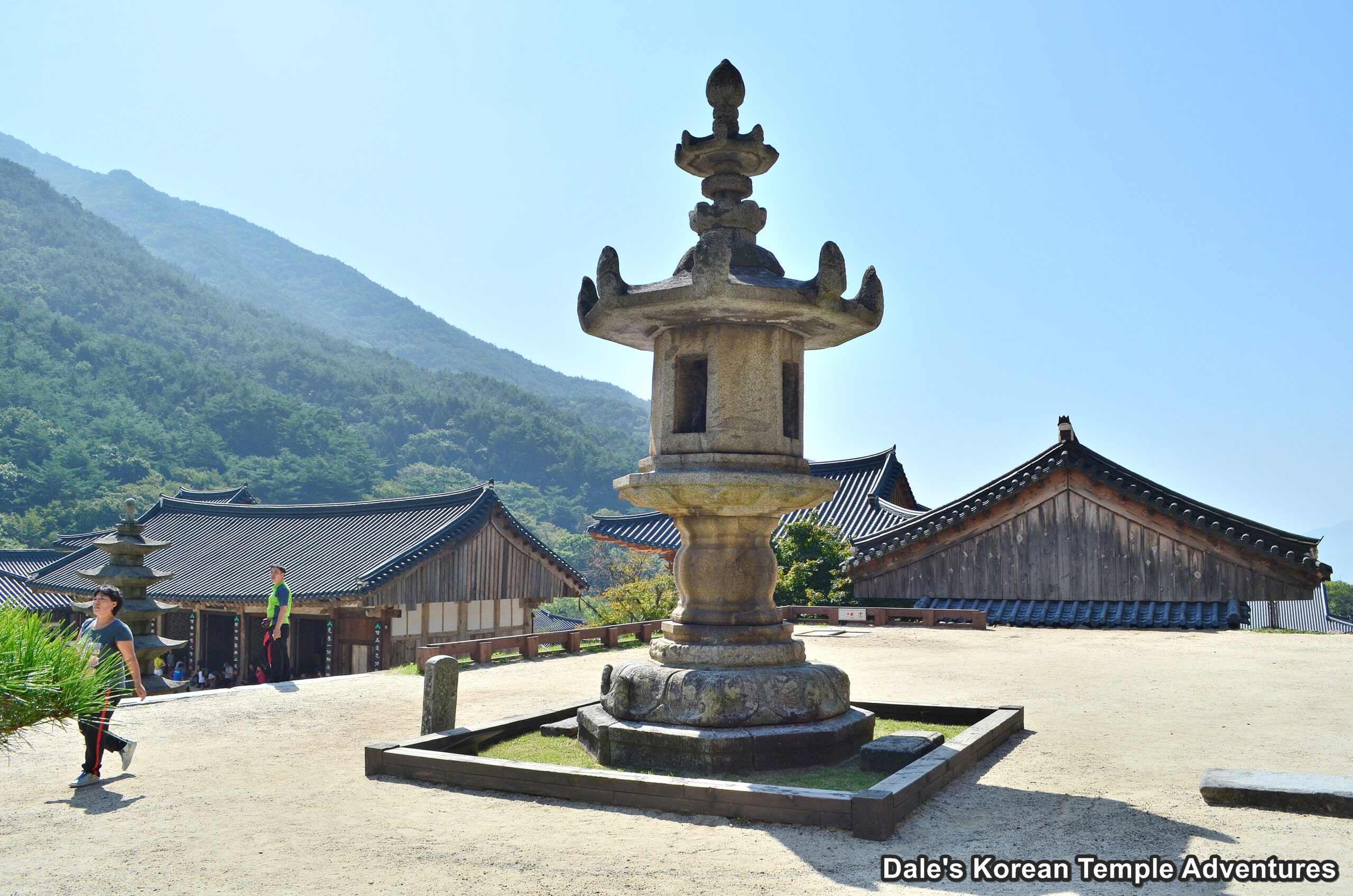
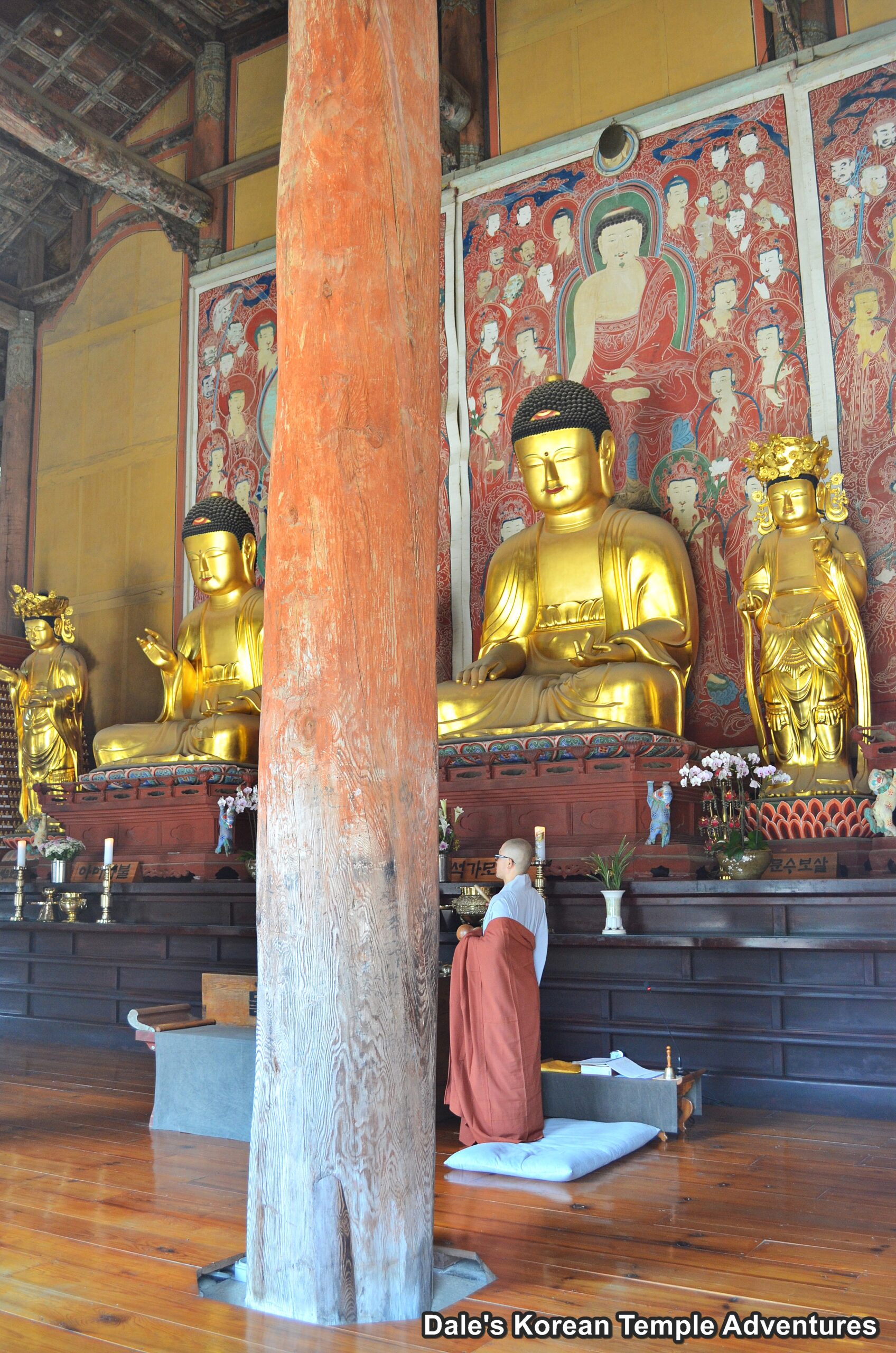
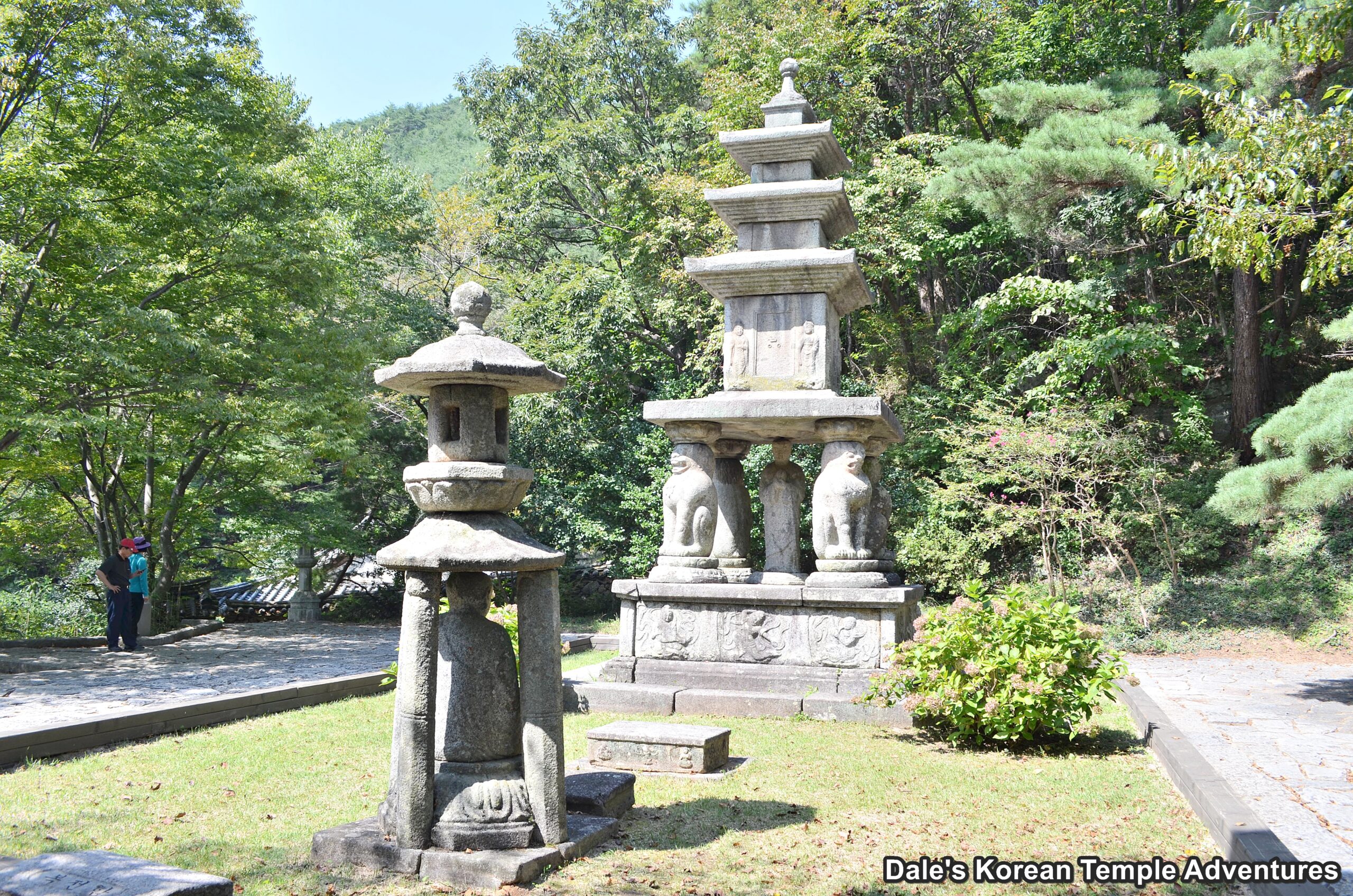
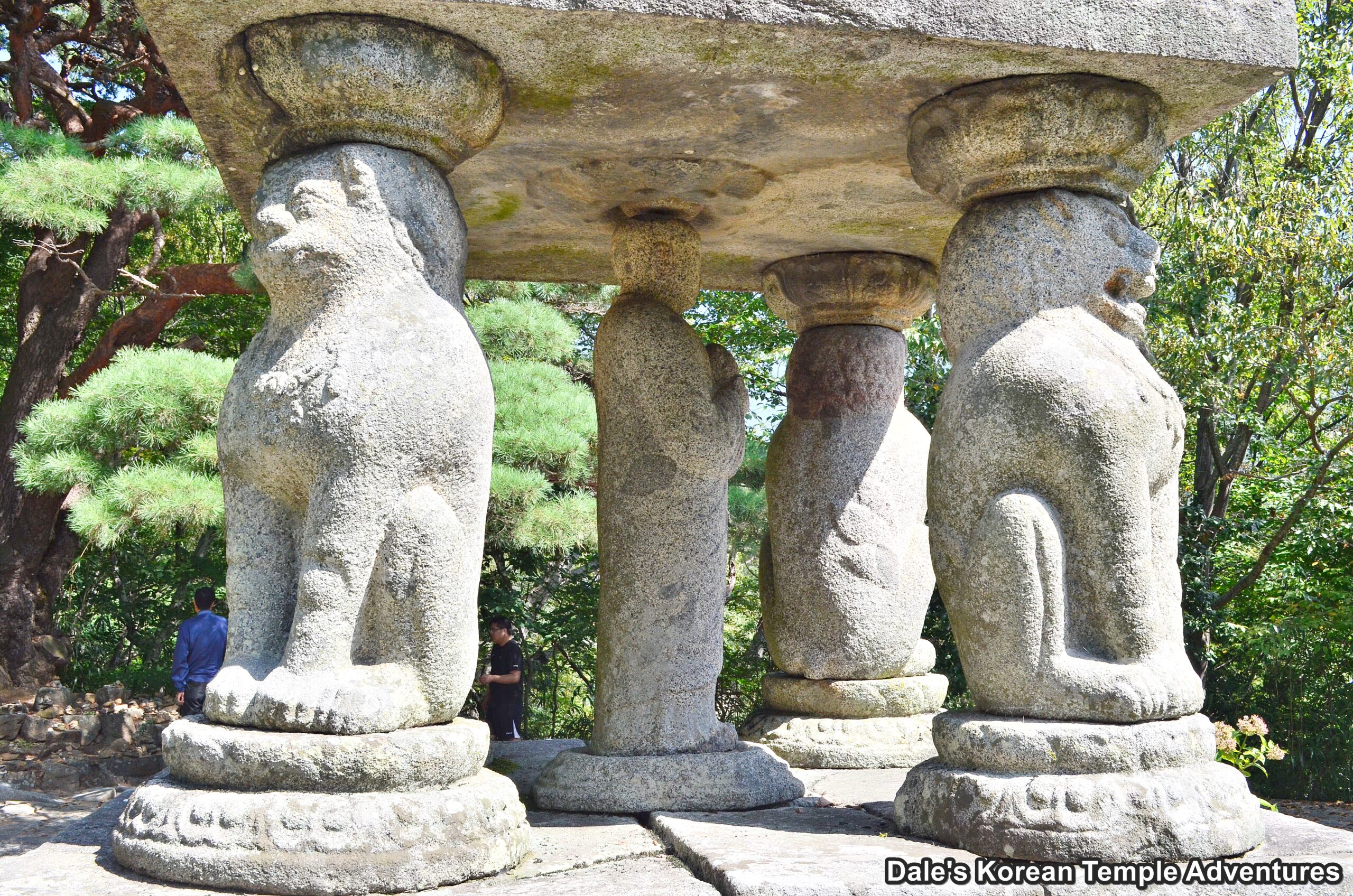


Recent comments